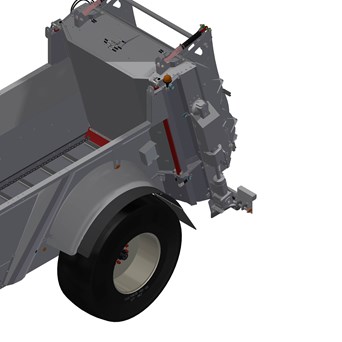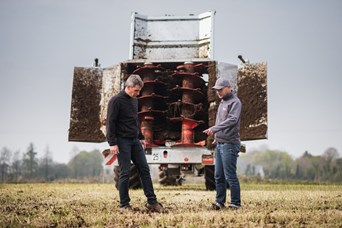November 2022 - OPTI-SENSOR : INNOVATION FOR SOLID NATURAL FERTILISER ANALYSIS
Samson Group is developing the first NIR (near-infrared) sensor to measure the dry materials level and NPK values in solid organic fertilisers (manure, compost, etc.) in real time.
EPSOLYS: The collaborative project behind the Opti-Sensor
The initial project led by Samson Group, INRAE and Photon Lines aimed to develop an integrated spectroscopy system to quantify the nutrients contained in manure. This multidisciplinary project combined the experiences and strengths of each party:
- INRAE helped build the database from 500 organic products collected from different livestock.
- Photon Lines developed the sensor.
- Samson Group determined the operating constraints and installed the sensor on the machine.
Opti-Sensor: A compact and autonomous embedded sensor
The Opti-Sensor is built into the spreader’s side panel. It uses near-infrared spectroscopy, a method with a proven track record in agriculture, notably regarding NIR sensors used in slurry. Samples are collected on a regular basis. The results are compared to the EPSOLYS database and help determine the rate of dry materials and ammonia nitrogen as well as carbon, phosphate and potassium in solid manure. The in-cab screen shows the real-time measurement.
Even more precision for solid organic fertiliser spreading
Manure is highly heterogeneous, making it impossible thus far to guarantee even spreading. A quantitative analysis of nutrients will ultimately make it possible to control spreading of one of the components as desired. Thanks to the Opti-Sensor, the operator will be able to use organic fertilisers to their full potential. It will prevent over- or under-dosing with a supply that is controlled at every hectare. This innovation will reduce mineral fertiliser costs, decreasing the environmental impact of spreading operations.
The EPSOLYS project is funded by the Region of Brittany and the FEDER.


